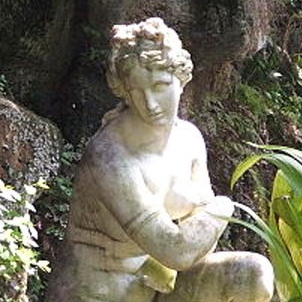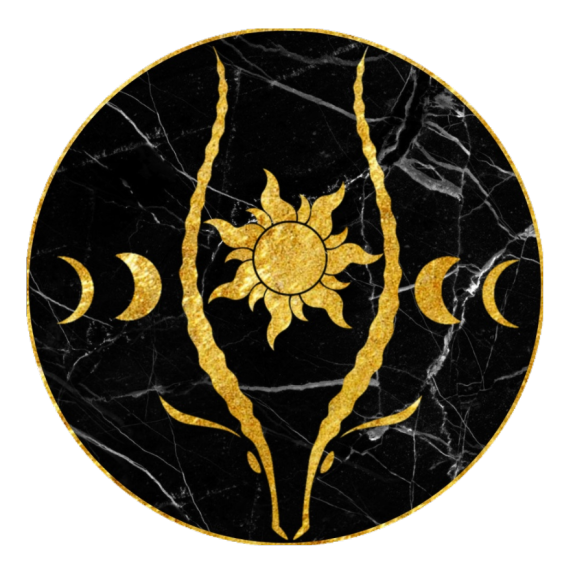- cross-posted to:
- paganism@lemmy.ml
- cross-posted to:
- paganism@lemmy.ml
cross-posted from: https://lemmy.ml/post/522686
“They believe in no other gods except Dionysus and the Heavenly Aphrodite; and they say that they wear their hair as Dionysus does his, cutting it round the head and shaving the temples. They call Dionysus, Orotalt; and Aphrodite, Alilat.” - Herodotus, Histories, Book 3, Ch. 8
There have been many theories regarding who Oratalt referred to. Perhaps Ḏušarē, Ruḍā, a corruption of Allāh ta’āla. His name may mean “the fire of God,” ôrath êl. But this post will focus on the second deity, Alilat, more commonly known as Allāt. She is by far the best attested deity in ancient Arabia across various languages and locations. Her name might be written as Lt, 'lt, ‘llt, Hn’ lt or Ltn. She was sometimes worshipped alongside two other goddesses, Manāt and Alʿuzza. Allāt means “the goddess” but it’s clear that it was treated as a proper name very early on as seen in Herodotus, who was writing in the 5th century BC describing events that happened in the 6th century BC.
After the 5th century BC, evidence of her worship is widespread. She’s attested as far south as modern Yemen up to the Hejaz, as far north as Syria and Mesopotamia and in the Roman era as far west as Cordoba, Spain. She was worshipped in the Nabatean kingdom, Palmyra and Hatra. She’s considered the consort of Ḏušarē. In fact, it’s possible they represented the only deities of the Nabatean pantheon. With all other deities simply being attributes of the god and goddess. In this sense the Nabateans weren’t polytheists, but dualists, like some Wiccans today. This is also supported by the Herodotus quote above. But this doesn’t mean all Arabs were dualists, polytheism is very clearly attested in epigraphy and the archeological record. It’s just one understanding of Nabatean religion. In this view, Manāt and Alʿuzza are just local manifestations or attributes of Allāt which were later split into distinct goddesses.
Regardless of a polytheistic or dualist worldview, it’s clear that Allāt played a major role in the Nabatean and other Arabian pantheons. She was regarded as the mother of other gods, worshipped in the legendary city of Iram and was the patron-deity of Bosra. In the Hellenistic era She took up the iconography of Athena/Minerva. The name Wahballāt (gift of Allāt) was often translated into Greek as Gift of Athena. Herodotus associates Her with Aphrodite Urania (Heavenly Aphrodite) and this stellar aspect is reflected in Palmyra where Arab families would sometimes invoke their patron deity as Allāt, and sometimes as Astarte. She’s best attested in Safaitic inscriptions where She’s the most frequently invoked deity.
In these Safaitic inscriptions the author would write their name, address the deity, and then request something such as safety, relief, or wealth. Allāt was mostly invoked for safety and security, such as when herding goats, or for relief from sickness. Unlike in the Nabatean pantheon where gods were referred to as the gods of the king, Allāt is a personal deity. She was invoked for day-to-day requests by Arab nomads. Further south in Dedan, the center of the Lihyanite kingdom, Allāt was secondary to the main deity, Ḏul Ɣaybat, and found in personal names. The fact that She’s not as well attested in Dedan might mean that She was introduced from the north. She’s also found in Duma and in Thamudic inscriptions scattered around the Arabian peninsula. In South Arabia, amulets belonging to women inscribed with the name Allat and sometimes along with Alʿuzza suggests that these two goddesses were patron-protectors of women.
To summarise, Allāt is attested as early as the 5th century BC. From then on Her worship is found in the kingdoms of Nabataea, Palmyra and Hatra, and in the Arabian and Syrian deserts. She was most popular among Arab nomads who used the Safaitic script. Although first equated with Aphrodite Urania by Herodotus she would later take up the iconography of Athena in Romanized areas. She’s often associated with two other goddesses, Manāt and Alʿuzza, who may have once been Her attributes, and the god Ḏušarē who’s considered Her consort. She’s also regarded as the mother of gods. She’s called upon for day-to-day requests such as safety, security, and relief, and along with Alʿuzza she was a patron-protector of women.

